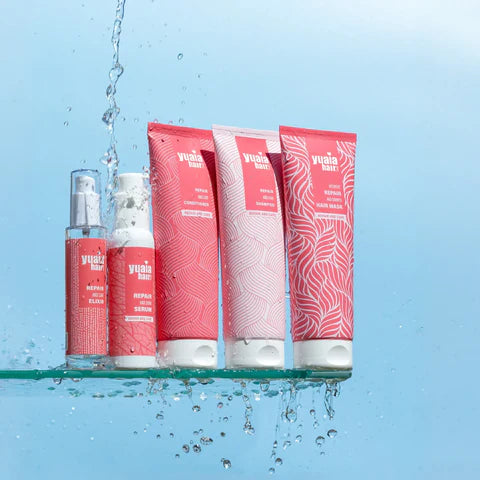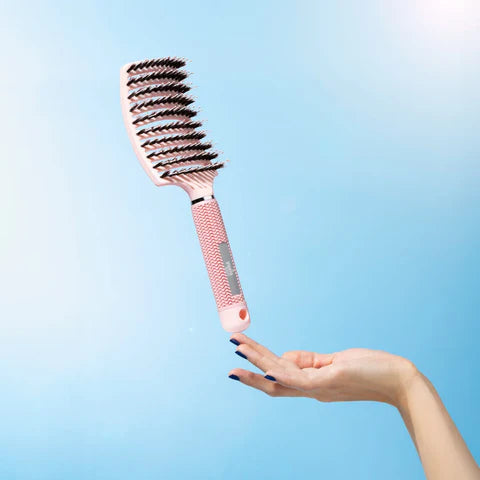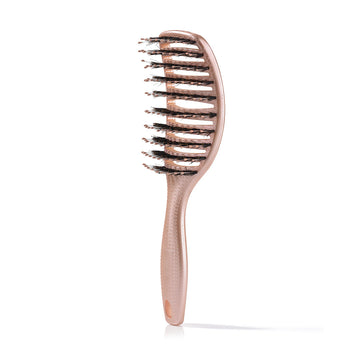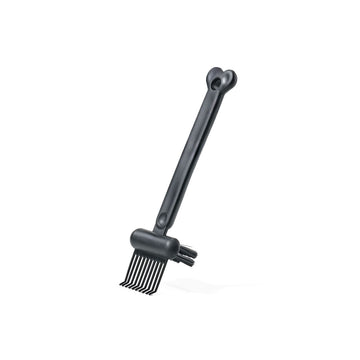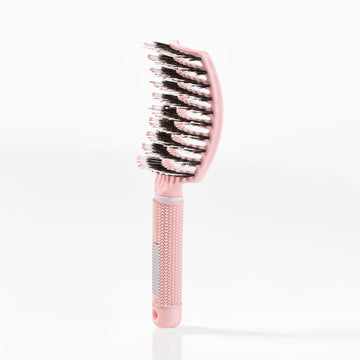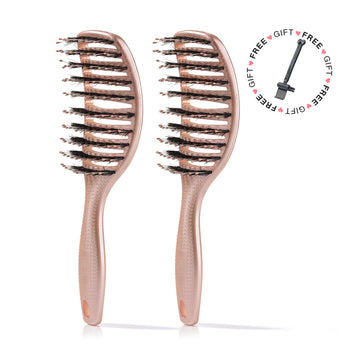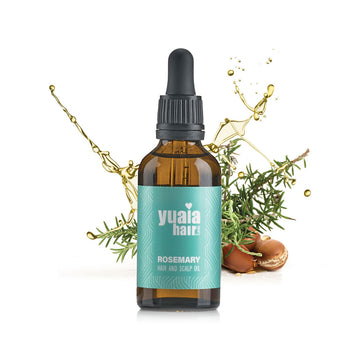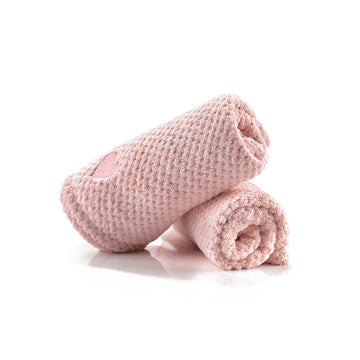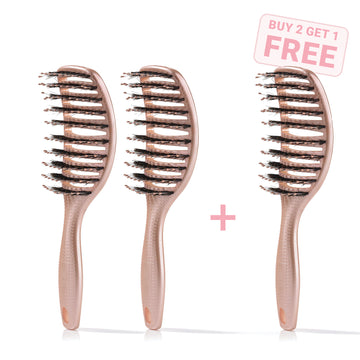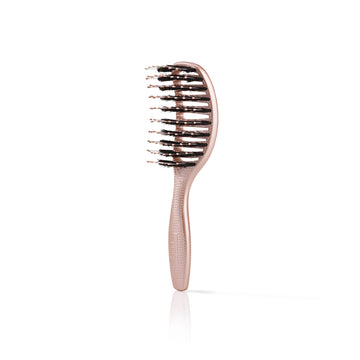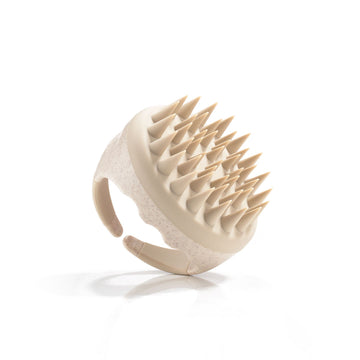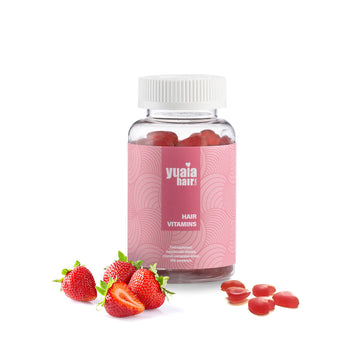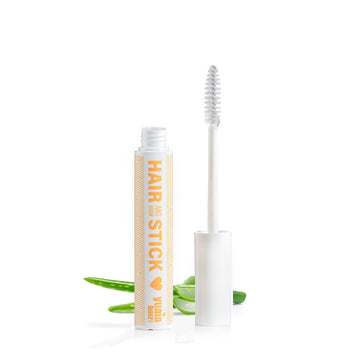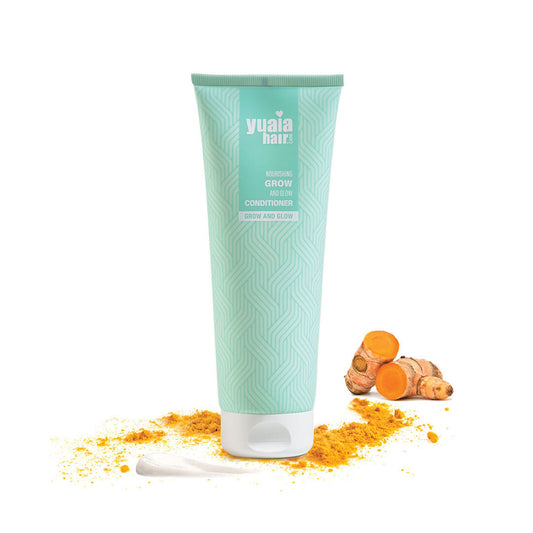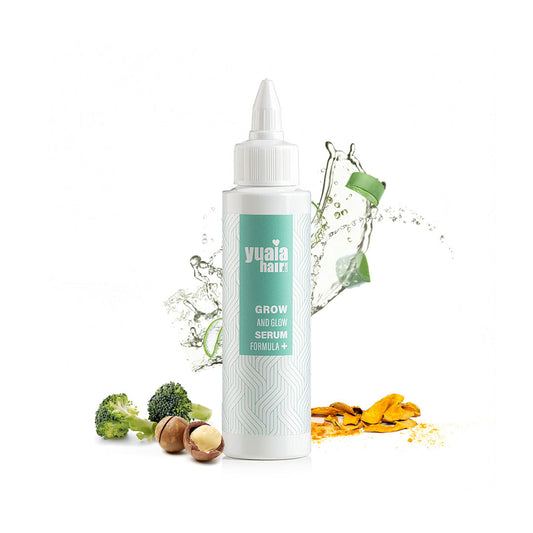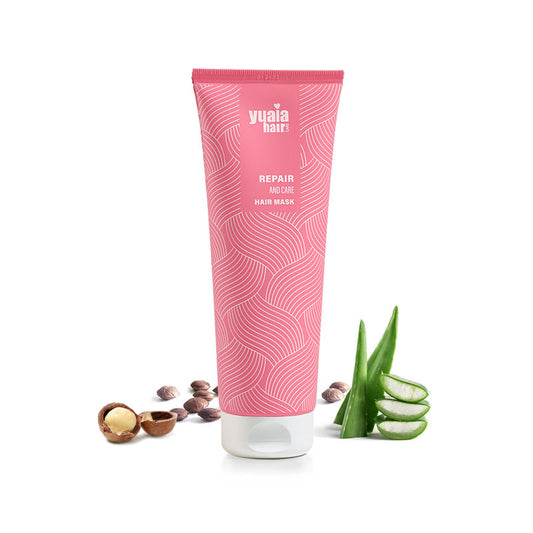
Benefits of apple cider vinegar for hair
Apple cider vinegar offers a range of benefits for hair health:
-
Helps regulate the scalp's pH, which can prevent issues like dandruff, itchiness, and even mild scalp infections.
-
Supports a healthy pH level to maintain the scalp's natural barrier, promoting better conditions for hair growth and reduced irritation.
-
Breaks down product residue, silicone buildup, and excess sebum, resulting in a lighter, cleaner feel for both scalp and hair.
-
Possesses antimicrobial properties that may help address fungal or bacterial imbalances responsible for flaking or unpleasant odors.
-
Enhances shine, improves texture, and increases manageability with regular use.
-
Contributes to reduced tangling and smoother detangling routines over time, particularly when combined with gentle styling techniques.
Apple cider vinegar hair rinse recipe
A basic recipe includes:
-
2 tablespoons of raw, unfiltered apple cider vinegar, which retains the natural enzymes and beneficial bacteria often referred to as the "mother"
-
1 cup of filtered water to dilute the acidity and make the rinse gentle enough for regular use
Optional additions:
-
A few drops of essential oil such as lavender oil for a calming scent, tea tree oil for its antibacterial properties, or rosemary oil for stimulating the scalp and encourage hair growth
-
A teaspoon of aloe vera juice to add hydration and soothe irritation
Instructions for use:
-
Combine the ingredients in a clean squeeze bottle or spray bottle for easy and even application throughout the scalp and hair.
-
Shake well before each use to ensure all components are evenly distributed.
-
Store any unused rinse in the refrigerator for up to one week to maintain freshness and prevent bacterial growth.
How to do an apple cider vinegar hair rinse
To do an apple cider vinegar hair rinse, follow these step-by-step instructions:
-
Begin by shampooing your hair as usual to remove surface dirt and oils.
-
Prepare your ACV mixture in advance by combining your preferred dilution of apple cider vinegar and water in a clean spray or squeeze bottle.
-
After rinsing out your shampoo, apply the ACV mixture evenly throughout your scalp and the length of your hair.
-
Gently massage your scalp with your fingertips for one to two minutes to encourage blood circulation and even coverage.
-
Let the mixture sit in your hair for three to five minutes to allow the vinegar to cleanse, balance the scalp, and dissolve product buildup.
-
Rinse your hair thoroughly with cool or lukewarm water to close the cuticle and enhance shine.
-
Optionally, follow with a light conditioner if your hair feels dry, or if you prefer extra softness and moisture.
-
Repeat this routine once or twice per week based on your hair's individual needs and how it responds to the treatment.
Apple cider vinegar hair rinse - Before or after conditioner?
One common question is when to apply the ACV rinse. If you use conditioner, you can experiment with applying the rinse before or after conditioning.
Applying before conditioner allows the vinegar to cleanse and balance the scalp, while following with conditioner can restore moisture. Conversely, using the rinse last can help seal the cuticle, potentially enhancing shine. Consider your hair type: Oily scalps may benefit from rinsing before conditioning, while dry hair might prefer the rinse afterward.
Customizing your ACV rinse
Tailoring your rinse can improve results and help you get the most from your ACV hair treatment. Each hair type and scalp condition responds differently to vinegar, so it's important to adjust the formula and frequency to suit your individual needs.
Sensitive scalp adjustments
For sensitive scalps, it's best to start with a very mild dilution—perhaps one tablespoon of ACV to one cup of water—and monitor how your skin reacts. If you experience tingling or irritation, consider using the rinse less frequently or adding soothing ingredients like aloe vera.
Solutions for dry or brittle hair
If your hair is dry, brittle, or prone to breakage, supplement your rinse with hydrating elements. Aloe vera is a particularly good choice because it soothes the scalp while offering light moisture.
For hair growth and scalp stimulation
Those who are focused on stimulating hair growth or improving circulation in the scalp can incorporate ingredients like tea tree oil, peppermint oil, or even a mild infusion of rosemary. These additions are known to invigorate the scalp and may encourage healthier hair over time.
How often should you do an apple cider vinegar hair rinse?
Beyond the ingredients, the frequency of your rinse plays a significant role. Some people find that using the rinse once a week is ideal, while others benefit from biweekly treatments. Always listen to your hair and scalp—if your hair starts to feel dry or your scalp becomes irritated, it's a sign to reduce usage or adjust the mix.
Keep experimenting
Don't hesitate to experiment. Try different essential oils or dilution levels to find the ideal formula. Documenting your results after each rinse can help you fine-tune your approach and achieve the best possible outcome for your hair health.
Frequency and precautions
Use an ACV rinse no more than once or twice a week to avoid over-drying. Always dilute ACV to prevent irritation. If you have color-treated hair, perform a patch test first, as the acidity may affect certain dyes. Those with extremely dry or damaged hair should proceed with caution and may benefit from alternating ACV rinses with deep conditioning treatments.
Why an apple cider vinegar rinse could be the key to healthier hair
An apple cider vinegar hair rinse is a simple, affordable, and natural method for enhancing hair health. Whether you're looking to clarify your scalp, boost shine, or reduce buildup, incorporating this rinse into your routine can yield noticeable benefits. Start with a mild mixture and customize as needed to discover what works best for your unique hair needs.
Frequently Asked Questions
Can I use apple cider vinegar hair rinse on color-treated hair?
Apple cider vinegar can be used on color-treated hair, but it's important to do a patch test first. The acidity of ACV may affect certain hair dyes, so always dilute the vinegar and monitor your hair's response. If you notice any fading or changes, reduce frequency or discontinue use.
How often should I do an apple cider vinegar hair rinse?
Most people benefit from using an ACV hair rinse once or twice a week. Overuse can lead to dryness or irritation, so adjust the frequency based on your hair and scalp's needs.
Do I need to rinse out apple cider vinegar completely?
Yes, you should rinse your hair thoroughly with cool or lukewarm water after applying the ACV mixture. This helps remove any residual vinegar and closes the hair cuticle for added shine.
Can I use apple cider vinegar hair rinse if I have a sensitive scalp?
If you have a sensitive scalp, start with a very mild dilution—such as one tablespoon of ACV to one cup of water. Monitor for any irritation and reduce frequency or add soothing ingredients like aloe vera if needed.
Should I use conditioner before or after an apple cider vinegar rinse?
You can experiment with both methods. Using conditioner after the ACV rinse can help restore moisture, while using it before may allow the vinegar to seal the cuticle and enhance shine. Choose the method that works best for your hair type.
 2-4 day UK delivery
2-4 day UK delivery
 25.000+ satisfied customers
25.000+ satisfied customers
 Satisfaction Guarantee
Satisfaction Guarantee



